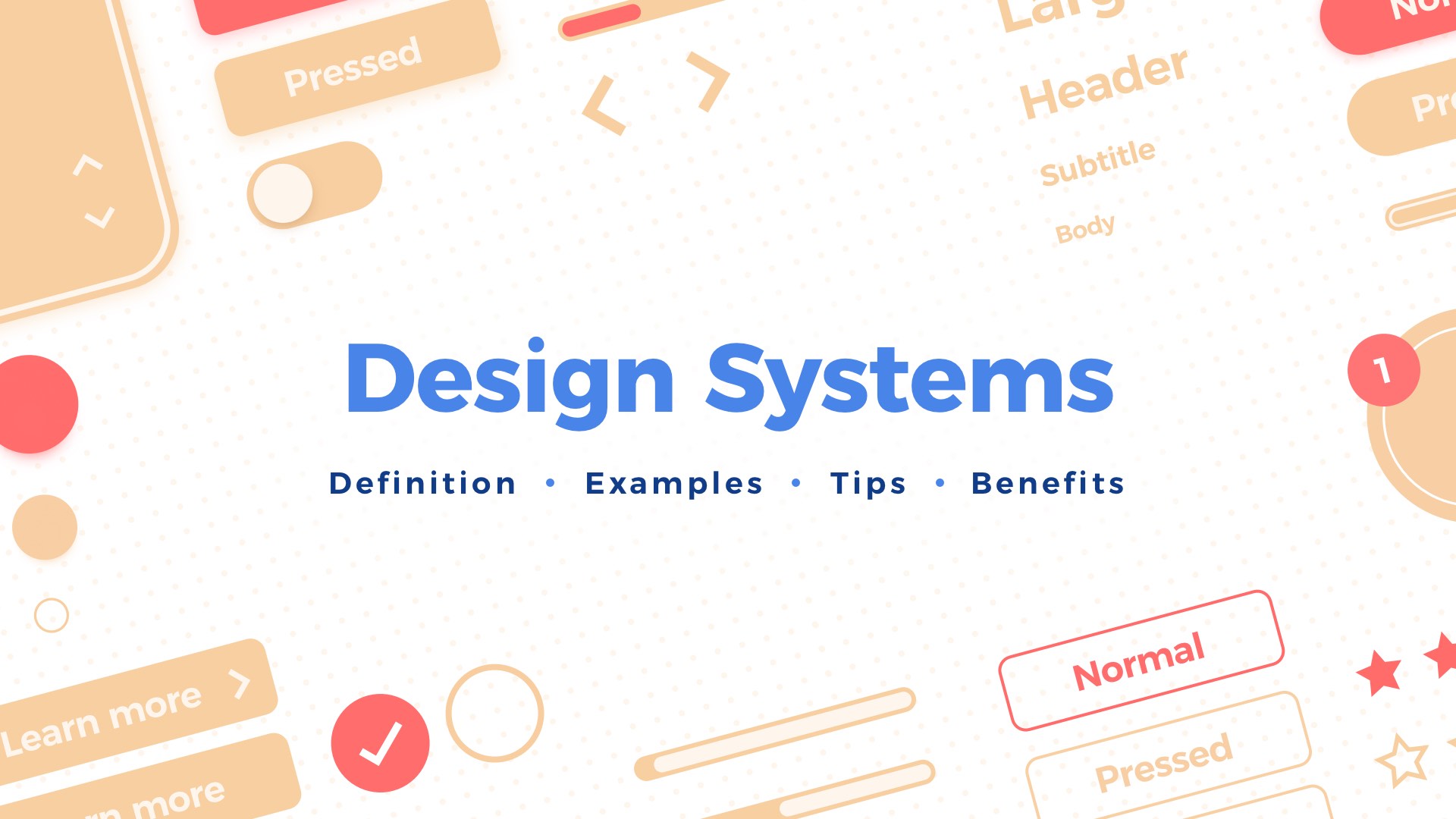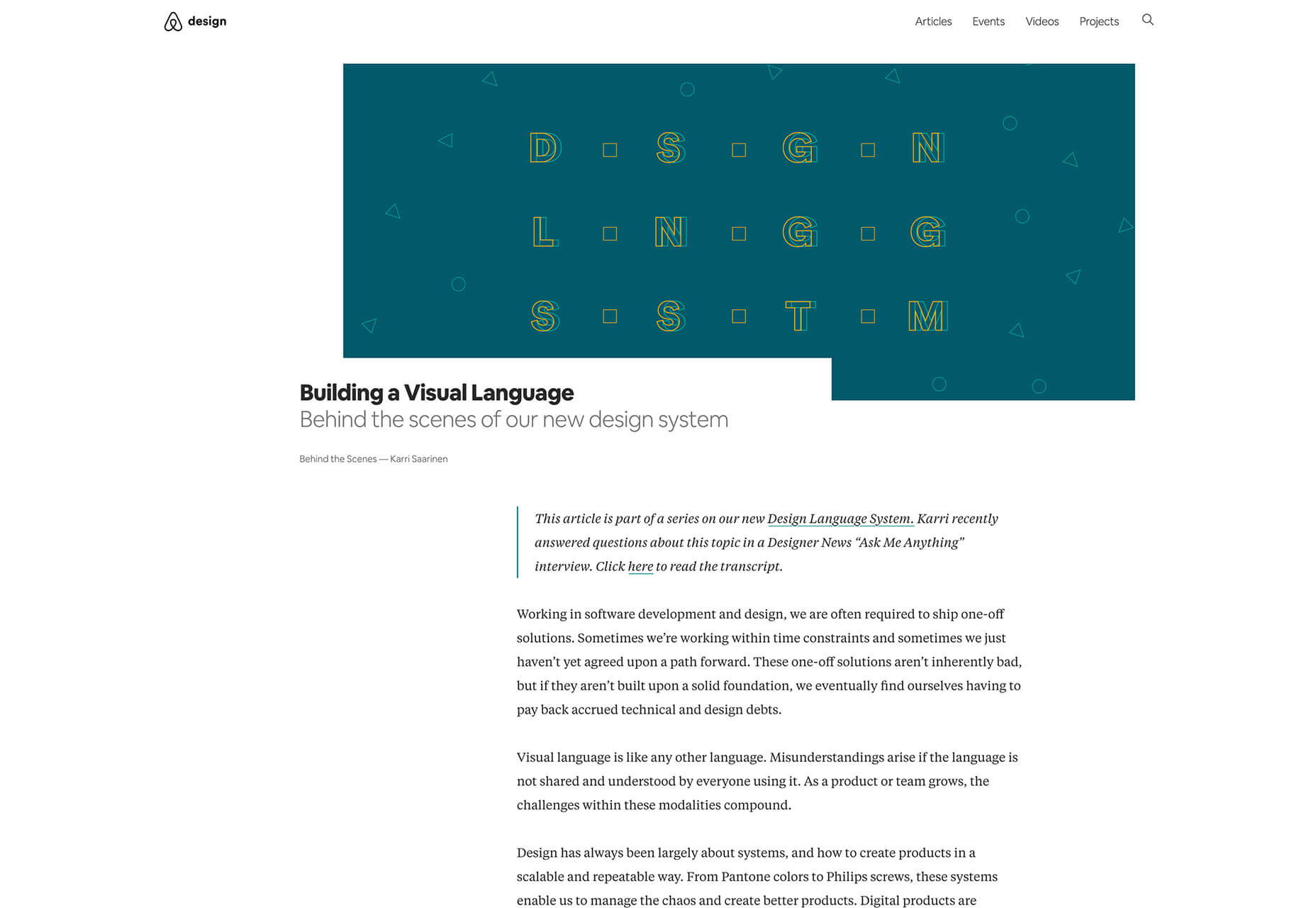Table Of Content

Design systems are great resources to inspire UX designers and help them to build their products with a unified look and feel. They provide professionals with all the necessary tools and guidelines to create successful UX experiences across different platforms and devices, including desktop computers, and mobile phones. Marketing automation platform Mailchimp created its pattern library in 2018. Helper classes enable designers to style elements easily across the application, and the visualization section helps to tell a clear and engaging data story. From exploring these design systems, there are common themes and best practices that can be applied when developing your own. Some of the core principles include efficiency, consistency, open collaboration, accessibility, and clear documentation.
Features of Uber Design System
This can help in measuring which areas of the design system are most successful and which ones might need improvement. Here are practical guidelines and considerations for design system adoption, collaboration, documentation, and maintenance. Before defining your colors, identify the different use cases and contexts in which color might be needed. Thoroughly test your color palette to ensure that there is sufficient contrast between background and text colors, and provide guidance on how colors should be used across different UI elements.
Deutsche Bahn: Content Guidelines And UX Writing
This article will talk about the principles that guide successful design systems and key takeaways from a few examples to help you develop your own. Audi Design System also offers a soup-to-nuts design system, which ranges from “Getting Started” guides to core components intended for adoption within each product, the carmaker said. Audi’s design system aims to create a single source of truth for product teams and improve user experience with its consistent components, design interactions and patterns. Design systems are essential for achieving design consistency and scalability in products. They also play a big role in enhancing efficiency in product development workflows. Design systems offer centralized repositories of guidelines and components, driven by principles like cohesion, modularity, scalability, and accessibility.
Apple Human Interface
To estimate total savings, you can select between different scenarios based on team size and product calculation. In her blog post, Elena starts with the smallest visual element, an icon, explaining what her team aims for when choosing and creating icons to make them align with the brand and provide real value for the user. Elena also shares insights into how they handle illustrations, including a scalable way of creating them and considerations regarding anatomy, style, and color. A great example of how a set of established rules can help make visuals more meaningful.

Essential components of design systems
That’s why it helps to outline your approach and know where you plan to begin well before you get started. Big Blue’s open-source IBM Carbon Design System relies on its IBM Design Language as its foundation, according to IBM’s website. Fueled by an active community of contributors, the design system maintains design kits containing Carbon components. Figma, Sketch and Adobe XD are some of the design kits offered and maintained by Carbon, while the Axure kit is maintained by the community. A design system offers a complete set of standards with the goal of allowing designs to be managed at scale, reports the Nielsen Norman Group.
How to build effective enterprise design systems for your company
Atlassian Design System focuses on providing valuable assistance to teams from all over the world by making their collaboration seamless and easy. It is called Apple Human Interface Guidelines and it presents a vast and rather valuable design system resource for the web design essentials and pattern libraries but downloadable templates. These design systems are then hosted as websites online and can be publicly available (they are open-source design systems) or internal, whatever the brand decides. Having recently updated their branding and identity system, Mailchimp has been a long-time leader in user-friendly email marketing and has grown beyond email into an all-in-one marketing platform for small businesses. If you are working on enterprise systems or large-scale corporate products (internally or externally) Carbon is a massive example of how to do it successfully. You can use this as a guide for how to manipulate heavy data in elegant and digestible ways and present it through compelling visualizations.
When a company has a design system, designers do not waste time solving design challenges that other designers have already solved. It enables quick updating of user interfaces and reduces time spent on the research required when creating new elements. It also has inbuilt integrations with other design system tools, including Figma and Storybook, which help automate the workflow from design to code. Teams can import their assets from Figma and display developer resources for each component all in the same place as their design system documentation. Accessibility should be incorporated early into the development process instead of treated as an afterthought.
This saves designers time from building basic elements and instead allows them to focus on creating digital experiences that meet user needs. One of the biggest benefits of a good design system is the ability to ship consistent and exceptional user experiences across multiple products and touchpoints. As design guidelines, these systems serve as a single source of truth for a brand’s design language. In addition to documentation and guidance on a brand’s approach to various design implementations, they also provide predefined solutions to common design problems.
Why Cadence Design Systems, Inc. (NASDAQ:CDNS) Could Be Worth Watching - Simply Wall St
Why Cadence Design Systems, Inc. (NASDAQ:CDNS) Could Be Worth Watching.
Posted: Tue, 13 Feb 2024 08:00:00 GMT [source]
Good design systems are dynamic entities that adapt seamlessly to a company’s growth and changes. The real magic of a design system is in minimizing the duplication of effort by the designers and engineers who bring a product to life. That’s why the future of design systems is bright when built and managed in web tools like Webflow — one where the roles of designers and engineers are blended, eliminating the friction of the traditional handoff. Clear documentation on how to use various elements of the design system saves your team time and ensures consistency. As you’re getting started, make sure you don’t separate the codebase from your documentation, as this can lead to duplicate work and inconsistencies that could derail your entire design system.
Since the birth of the modern Games more than 125 years ago, hundreds of people have grown and enhanced the Olympic brand. Learn the purpose of brand design systems, what makes them useful, and how to start building yours. Your pattern library is a collection of reusable UI components that will streamline design in the future. Creating a design system isn’t just a step toward better design practices — it’s a leap toward redefining how your business approaches creation, collaboration, and innovation. A well-thought-out design system can transform and influence every design element of your brand (for the better). Design systems can bring new levels of consistency and scalability to product and web design.
The design system was created to support designers and developers to build products efficiently that meet the evolving needs of their customers. Merge tech is created as an adequate solution to common challenges that often happen when there’s a communication gap between design and development teams. So, various UI components, coding and documentation inconsistencies can arise, affecting the product’s efficiency and maintenance. Apple Human Interface Guidelines consist of practical resources, visual guidelines and style guides for both designers and developers for iOS, macOS, vOS and watchOS. Your design system may look and feel beautiful, but it must also be easy for engineers to bring to life. The handoff from the UI designers to the engineers is a common friction point that reveals flaws in a design system.
Effective design systems are composed of reusable modular components, which gives designers the building blocks to create a variety of interfaces. Modularity provides versatility in how components are arranged and configured within a layout. Design systems are a great way to minimize the disconnect between designers and developers but are still not the ideal solution on their own. Thanks to the Merge technology revolution, product team members can easily use the same tools and improve their DesignOps workflow processes.
If you’re tasked with creating clear user interfaces, design systems are a good starting point and reference for any stage of the design process. A successful design system can educate team members, streamline work, and empower designers to solve complex UX problems. Storybook can be used to maintain documentation for how UI components behave and interact. The platform is interactive, allowing users to test out various use cases for each UI component.
The theming system is wildly flexible, allowing granular customizations across a swath of components all at once. First released in 2014, Google’s Material Design was one of the earliest design systems, and its introduction lead to other companies creating and releasing their own systems. Reflected in its name, Material emphasizes interfaces that mimic the physical world’s light, shadow, and texture, underscoring the idea of familiarity and predictability in digital products. The best systems also include a library of design and development resources that include design assets, code repositories, media kits, slideshow elements, and other templates.
A UI kit, also called a component library, includes modular user interface components, such as buttons, dropdown menus, forms, typography, icons, and more. Reusing the same patterns and components can reduce users’ mental overload and make their experience more enjoyable. For instance, Apple provides guidelines for designers and developers to work more efficiently. DesignOps is a set of best practices and principles that aims to streamline the effectiveness of design teams. As your team gradually adopts the design system, remember to maintain clear documentation and gather feedback from them.
But your journey to taking advantage of this power starts with alignment — a shared understanding of what design systems are, why they are essential, and how to craft them with purpose. It’s about embracing a bold vision for consistency and scalability in web and product design, underpinned by a deep commitment to bringing every member of your team on board. Details of its Design Language System are scant, but the company’s design team previously published thoughtful articles on how they approach design. Fluent emphasizes light, depth, and texture while intentionally using physical objects in its vocabulary to make interactions and experiences feel natural and organic. At the same time, Fluent is created for flexibility and scalability at its core, made with a clear drive toward multiplatform experiences. To fully understand what a design system is, it’s helpful to explore the concept of atomic design.

No comments:
Post a Comment